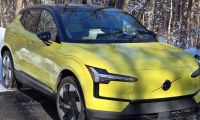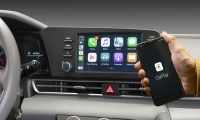NIO Battery Swapping -VS- Tesla Supercharging
NIO, a Chinese EV company, utilities a technology called battery swapping. This essentially allows a NIO EV driver the ability to park in a "bay" and have their battery removed and replaced with one that has a full charge. The replaced battery is likely recycled in order to be reused. There is one glaring problem with battery swapping, however, when compared to Tesla Supercharging - particularly v4 Superchargers and beyond.
A battery swap takes anywhere between 3 and 6 minutes from what I've seen online from public sources, and this is a fast time to get a new battery. To charge from 0% to 100% in a Tesla at a Supercharger cannot be done in 3 to 6 minutes - and may not ever be able to be done without a new type of battery - but it doesn't need to. Battery swapping presently wins in time and getting a possibly better battery, but that is where the advantages stop.
Tesla Owner Saw Smoke Come From His Tesla Model Y While Charging: What It Actually Washttps://t.co/3Cl01ZePWS$TSLA @Tesla @torquenewsauto #evs #charging #smoke #steam #suprecharger #ownersmanual
— Jeremy Noel Johnson (@AGuyOnlineHere) December 28, 2023
NIO battery swapping has several disadvantages:
- Nobody must be using the bay to replace the battery - there are plentiful Superchargers (granted a few in California can get crowded, but overall, I've rarely seen a full Supercharger station)
- You wouldn't usually arrive at a battery swapping station at 0%, which means you aren't doing a true 100% battery replacement. I'd guess it's around a 5% to 10% state of charge
- Battery swapping requires the driver to remain in the car
- Battery swapping keeps multiple batteries on stand by that aren't being used for anything until they get swapped
- Battery swapping is a process of removing and replacing parts, which can be prone to error
Fortunately, you can still charge a NIO car in addition to being able to battery swap.
You May Also Be Interested In: "This Was A Poker Move For the Ages" Says Dan Ives on Tesla and Elon Musk When Tesla Cut Prices and Went After Volume
The One Glaring Problem With Battery Swapping
The one glaring problem with battery swapping is that it is a highly inefficient use of resources, with extra batteries simply taking up space while they are not being used.
Batteries for EVs are presently a scarce resource, with kWh costs still too high to justify replacing a battery unless it is under warranty. For example, a 60 kWh pack, which a Model 3 RWD standard has, would cost $133 (the cost of a kWh today) * 60 = $7,980 + any labor costs, taking it closer to $10,000.
It's not feasible to replace a battery unless it's under warranty for any EV today, however, that will change in the future with the continuing decline of cost per kWh of batteries.
When the cost per kWh is $10 in the distant future, and a compact car can get a new battery for $400, then won't regular battery swapping make more sense? I don't think so, all the reasons I mentioned up above are still true and even if the extra batteries lying around are cheaper, they are still extra batteries taking up extra space in a process that requires 3 to 6 minutes.
Perhaps the process will be simplified and better automated in the future to reduce time and potential errors, but Tesla Superchargers will also improve over time and give 80% charge in 10 minutes or less.
Sandy Munro Says the Tesla Optimus Bot "Can Do Anything On a Tesla Production Line That a Man Can Do"https://t.co/VJeZJ9LZD2$TSLA @Tesla @torquenewsauto #teslabot #production #assembly #evs #batteries #robots
— Jeremy Noel Johnson (@AGuyOnlineHere) December 28, 2023
As battery technology improves and charging rates speed up, battery swapping will become a technology of the past. It will still be useful for a car that has been driven a long time, but won't be something needed every day.
There is a reason that Tesla has built out its Supercharger network instead of making battery swapping stations. It's much simpler to have a charger stall that you simply plug into the vehicle, and it requires no other intervention - plus it's a more efficient use of resources.
The one thing that will be important for Tesla in the future is to make the process of a battery replacement much easier, faster, and simpler. As battery costs decline and someone has put on a few hundred thousand miles on a vehicle they want to keep, Tesla should make it easy to get a new battery, and I believe they will.
In Other Tesla News: Stunning New Wheels for the Tesla Cybertruck With Dry Carbon Wide Fenders Revealed
Was there anything I missed in regard to NIO battery swapping and Tesla Supercharging? Do you think that battery swapping is a doomed technology?
Share this article with friends and family and on social media - or leave a comment below. You can view my most recent articles here for further reading. I am also on X/Twitter where I post more than just articles daily, as well as LinkedIn! Thank you so much for your support!
Hi! I'm Jeremy Noel Johnson, and I am a Tesla investor and supporter and own a 2022 Model 3 RWD EV and I don't have range anxiety :). I enjoy bringing you breaking Tesla news as well as anything about Tesla or other EV companies I can find, like Aptera. Other interests of mine are AI, Tesla Energy and the Tesla Bot! You can follow me on X.COM or LinkedIn to stay in touch and follow my Tesla and EV news coverage.
Image Credit, Tesla, Screenshot
Article References: AJ













Comments
So much to say. First, the…
Permalink
So much to say.
First, the batteries stored are not useless because if the city needs electricity nio can sell the power to the city.
Second, you said the driver have to stay inside the car during the swap, it's not true, the autopilot can do it by itself.
Third, you said the user go to swap with 5 or 10% battery remaining but it's the same for a tesla and a supercharger... So it's a useless non-argument.
And to finish the swapping is a way to have errors I would say no because there is to many checks in the system..
Good bye.
PS : tesla asked people if they wanted the swap tech, they said no but today with the cost of a battery replacement (26000$ no less) they realize the stupidity of a locked car...